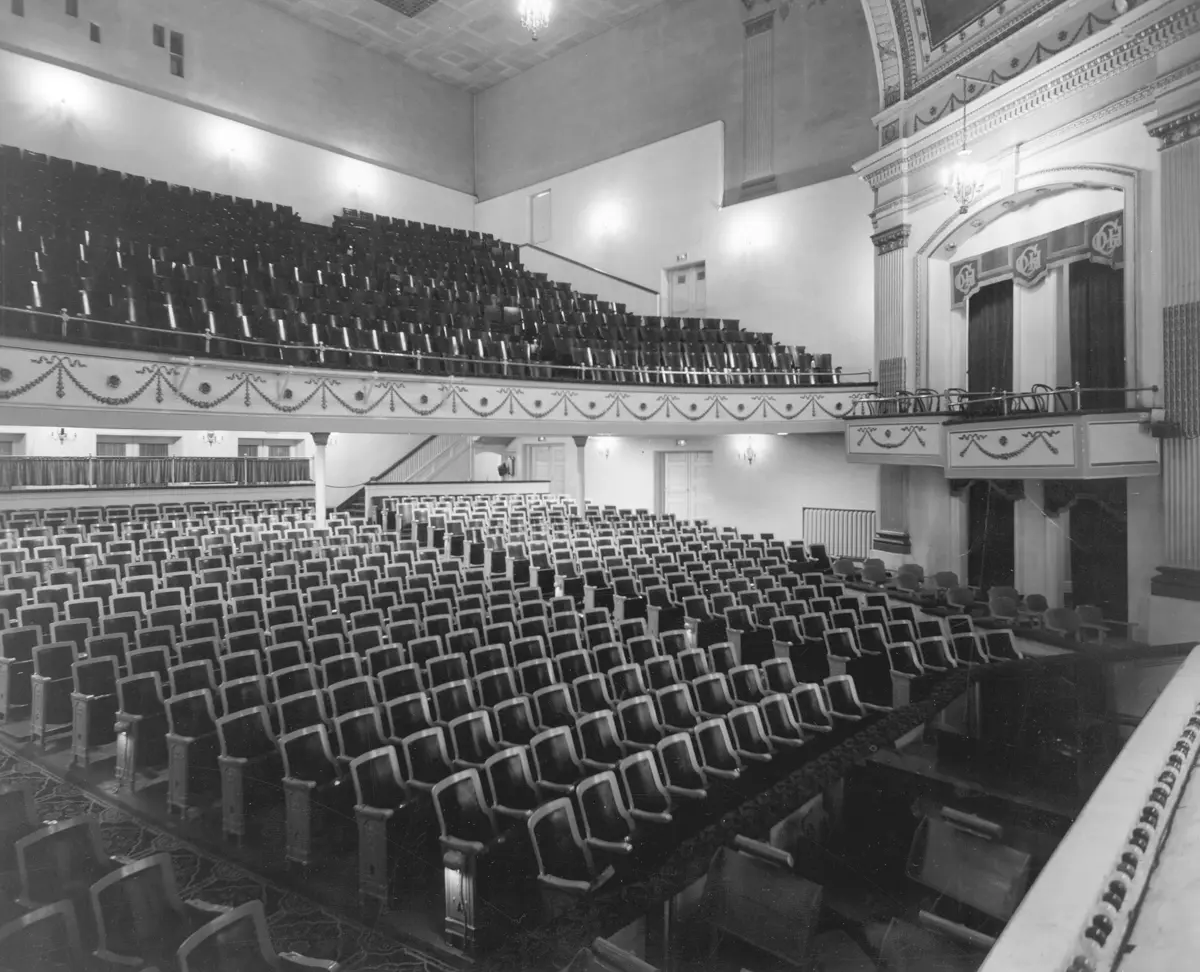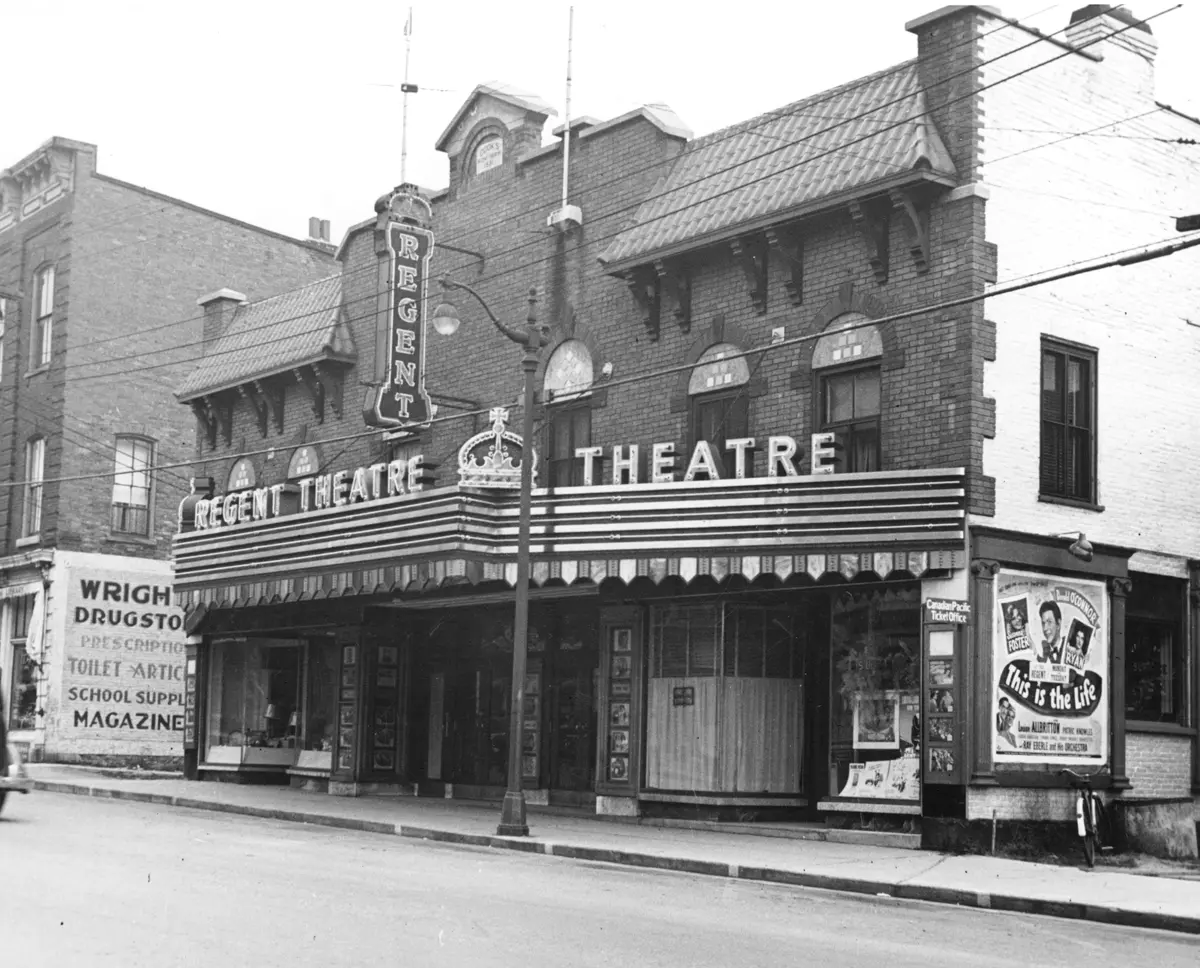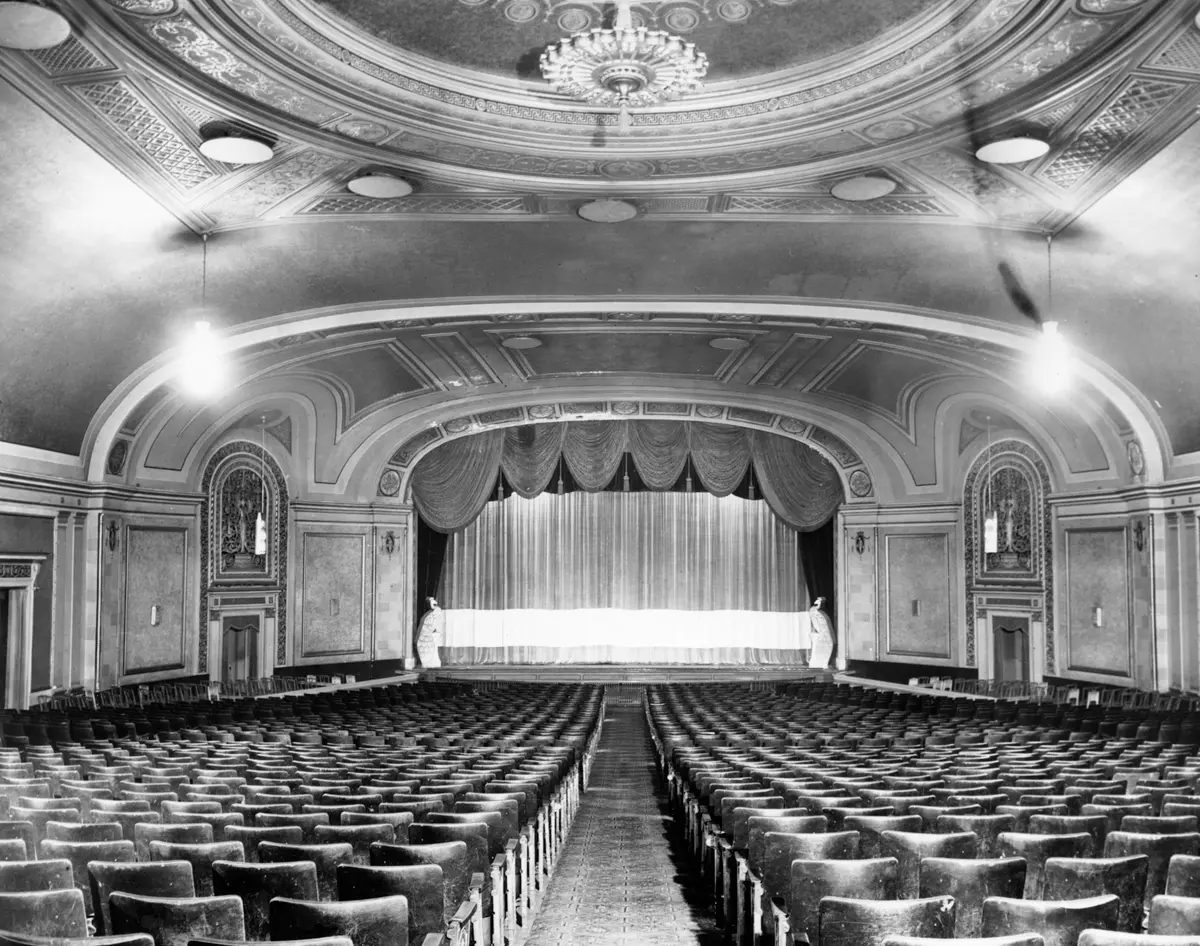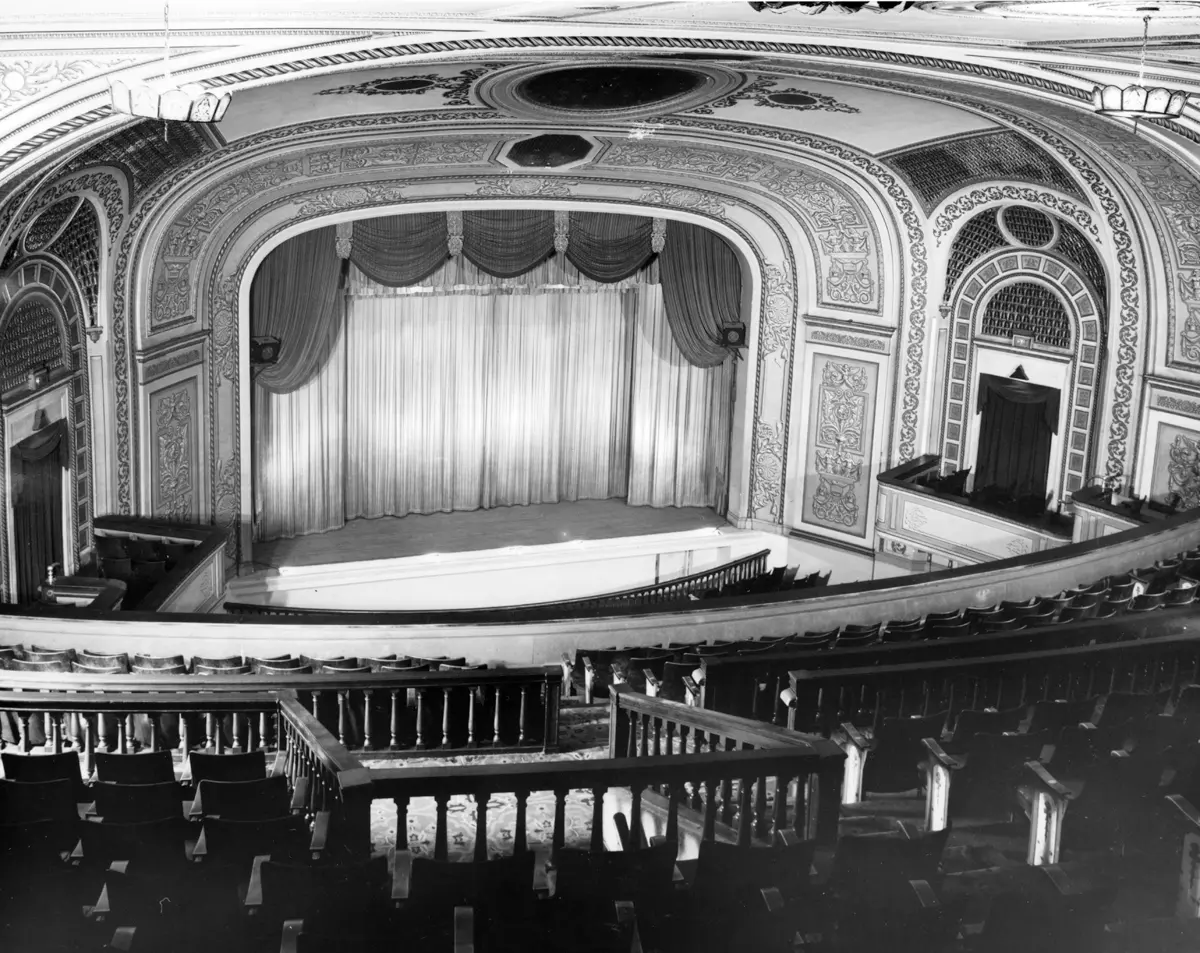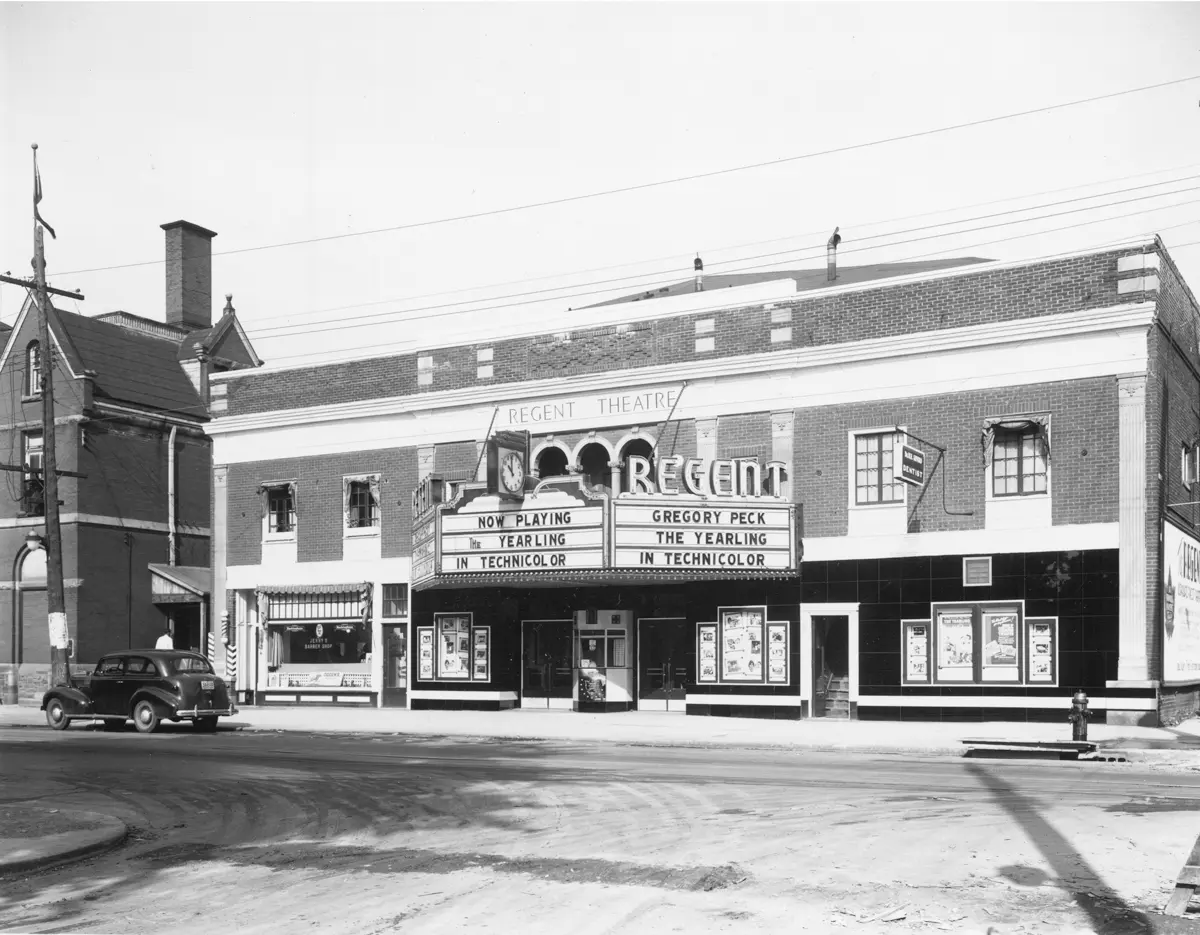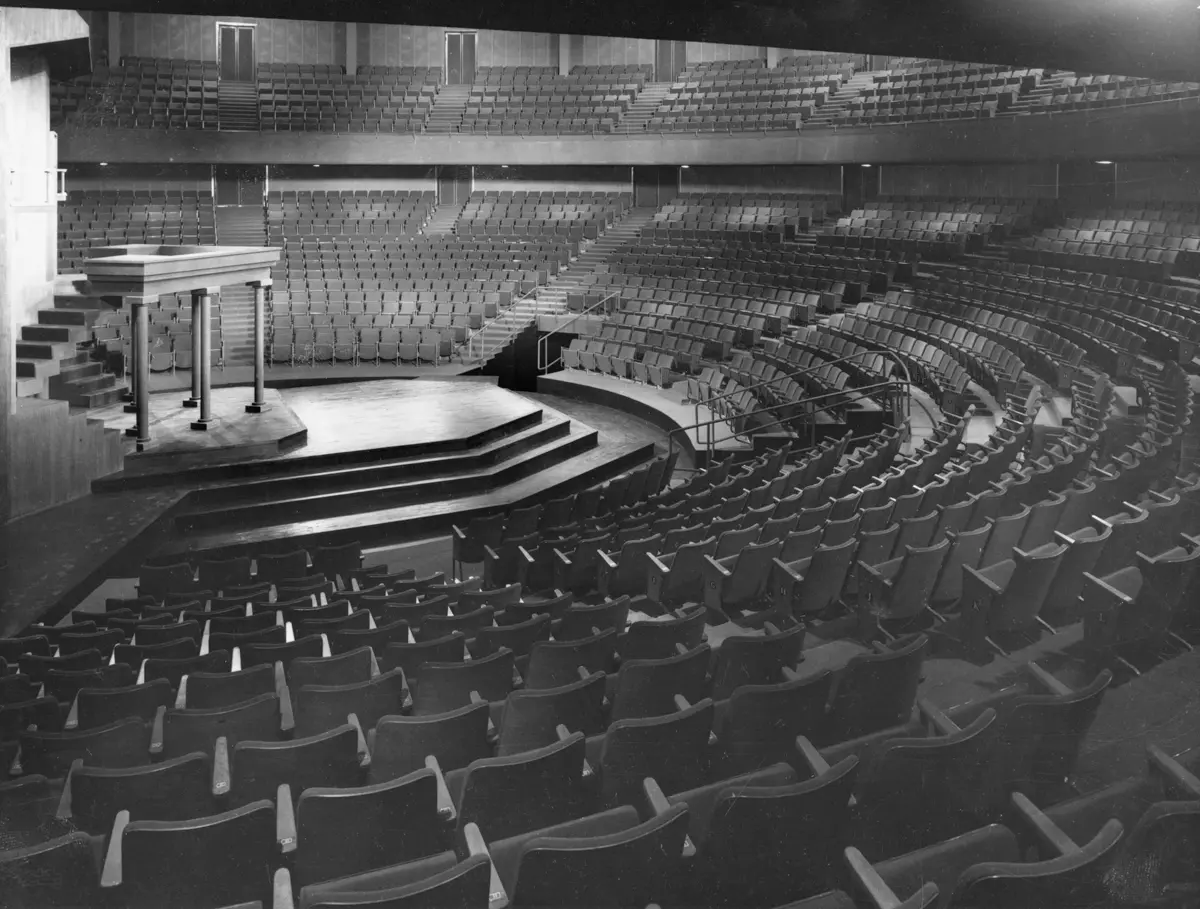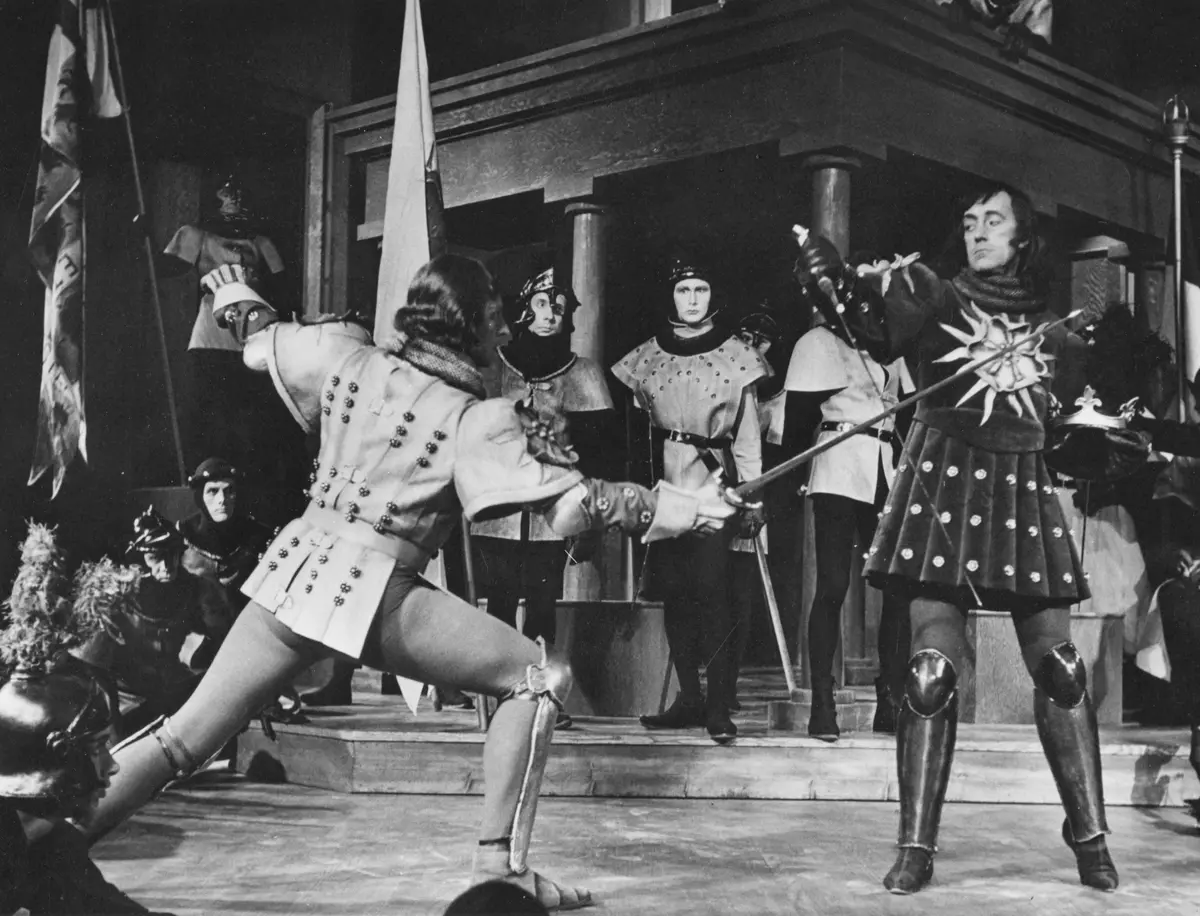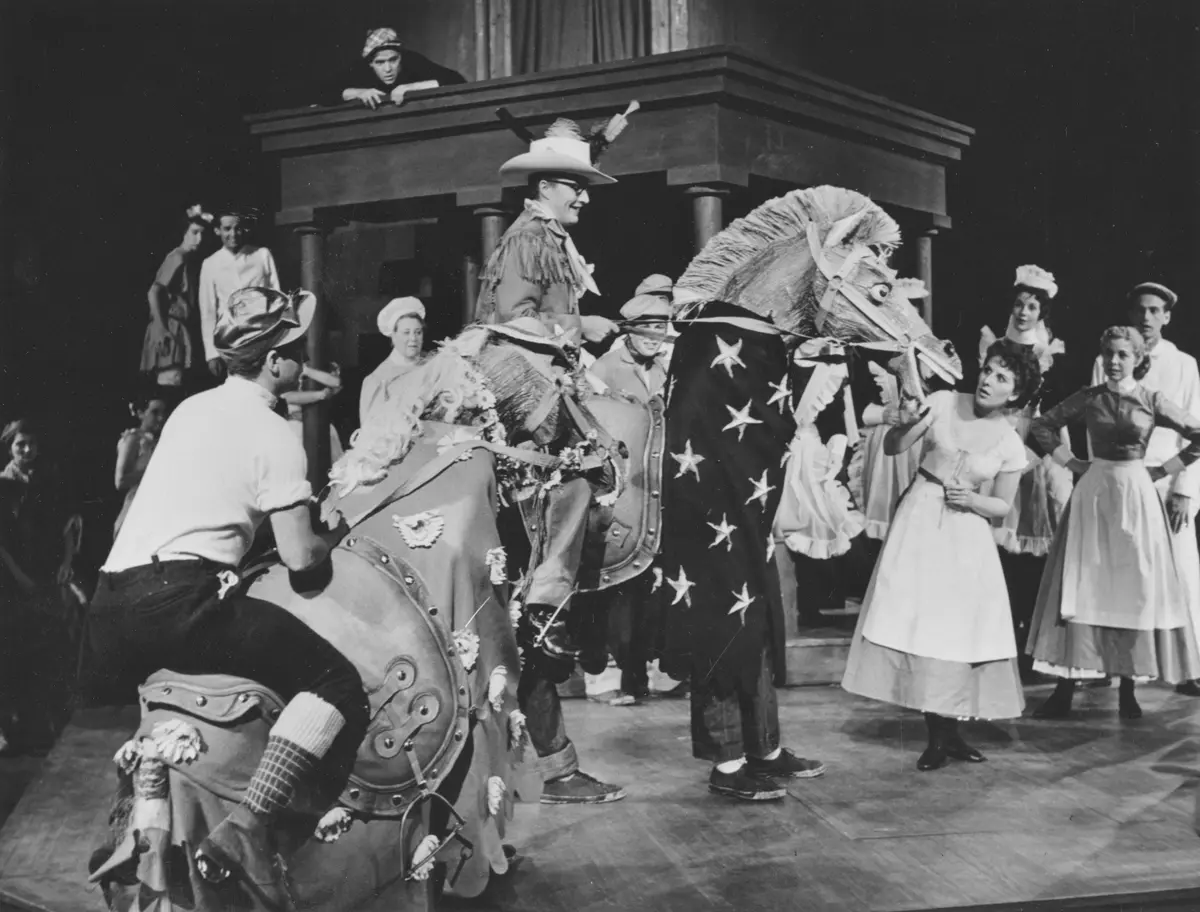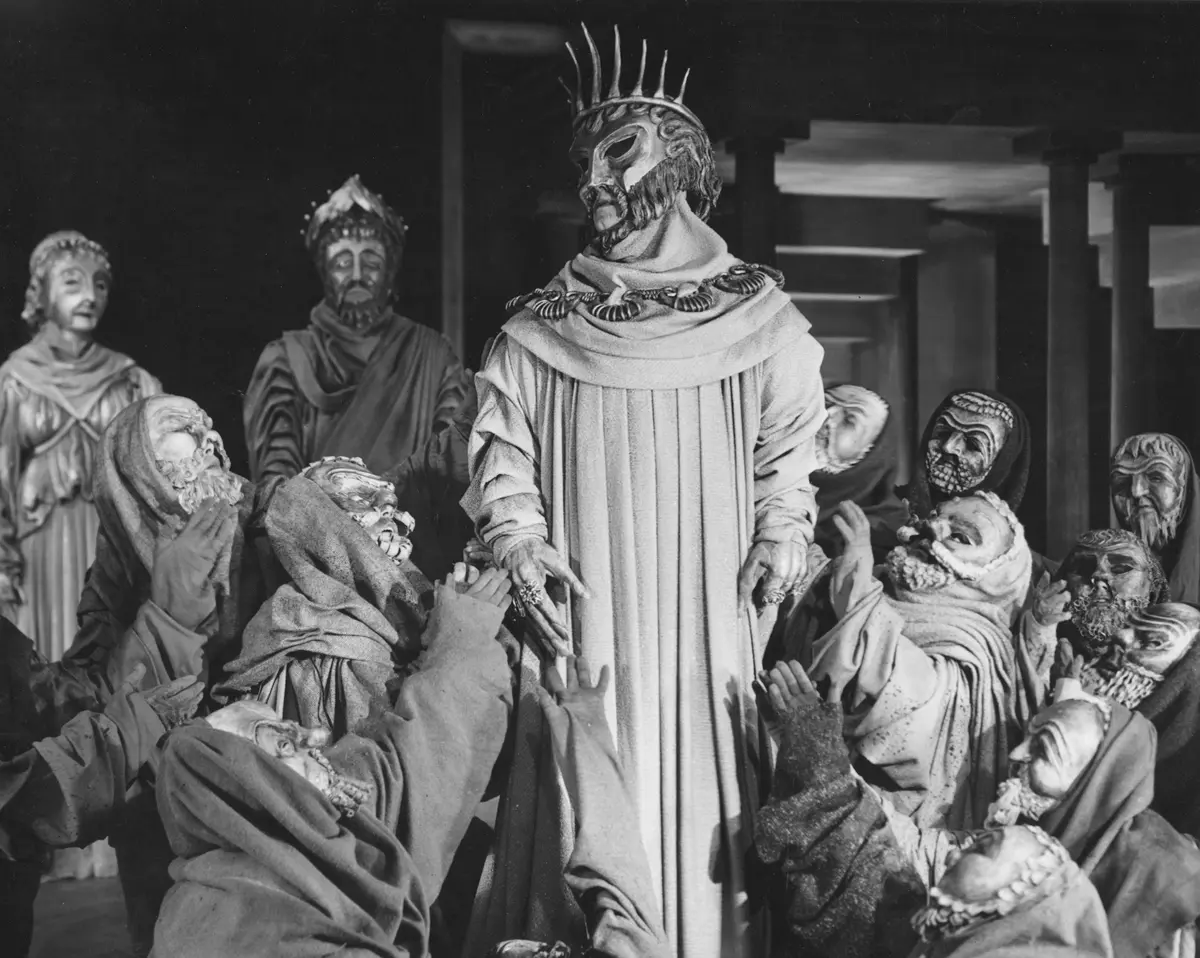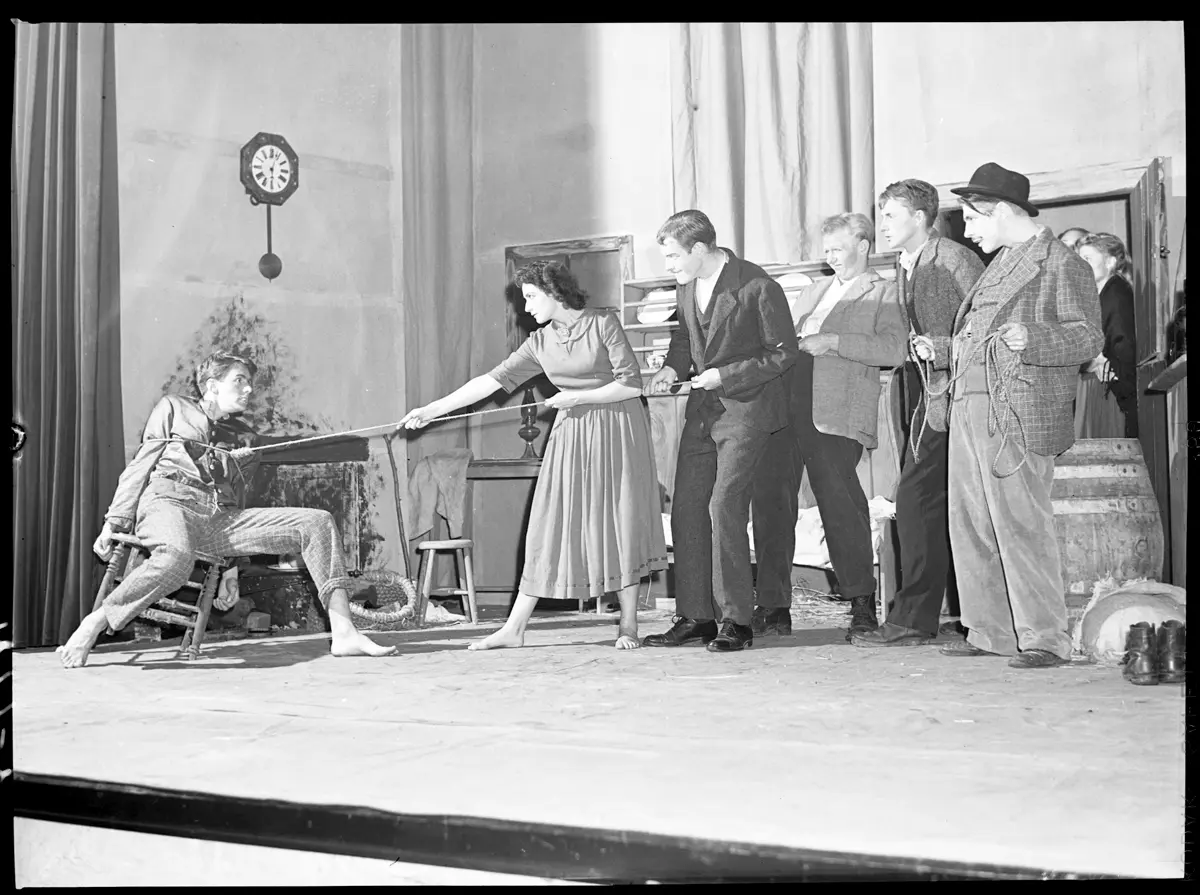
Act III: The show must go ON at mid-century
The Great Depression, motion pictures, and the Second World War forced live theatre in Ontario to creatively adapt to the changing times to ensure its continued appeal.
With the emerging professionalization and regulation of dramatic arts in the province, the period from the 1930s to the 1950s saw greater cultivation and recognition of home-grown talent within Ontario and on the world stage.
Vaudeville’s curtain call and new opportunities
During the Depression, the inexpensive escapism afforded by motion pictures furthered the decline of foreign touring companies and vaudeville. In fact, many vaudeville theatre owners began to exclusively show films.
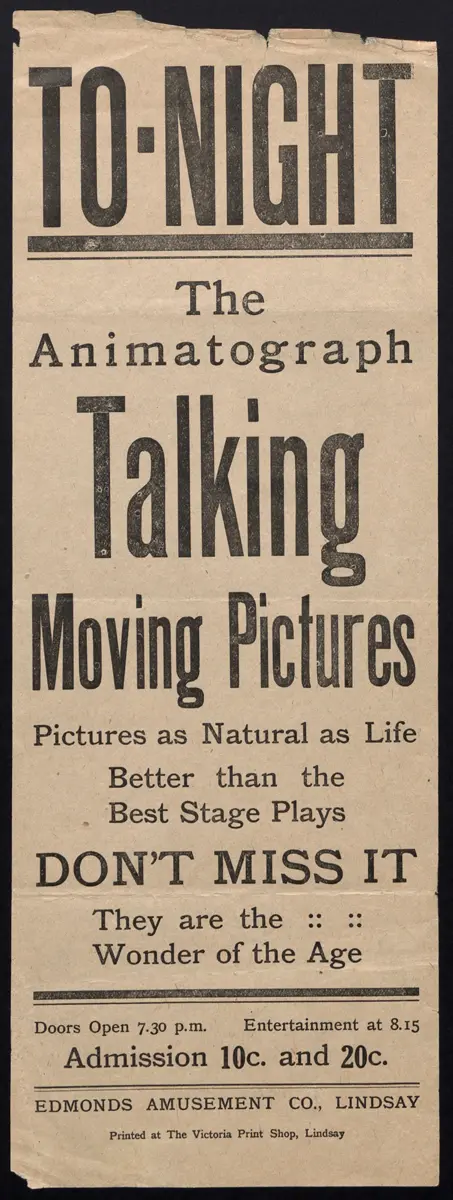
With the loss of many vaudeville houses, actors had to find other venues to showcase their talents. The creative use of performance spaces also extended to backstage preparations, as illustrated by the makeshift makeup and storage areas in these photographs of Chinese actors getting ready for a show.
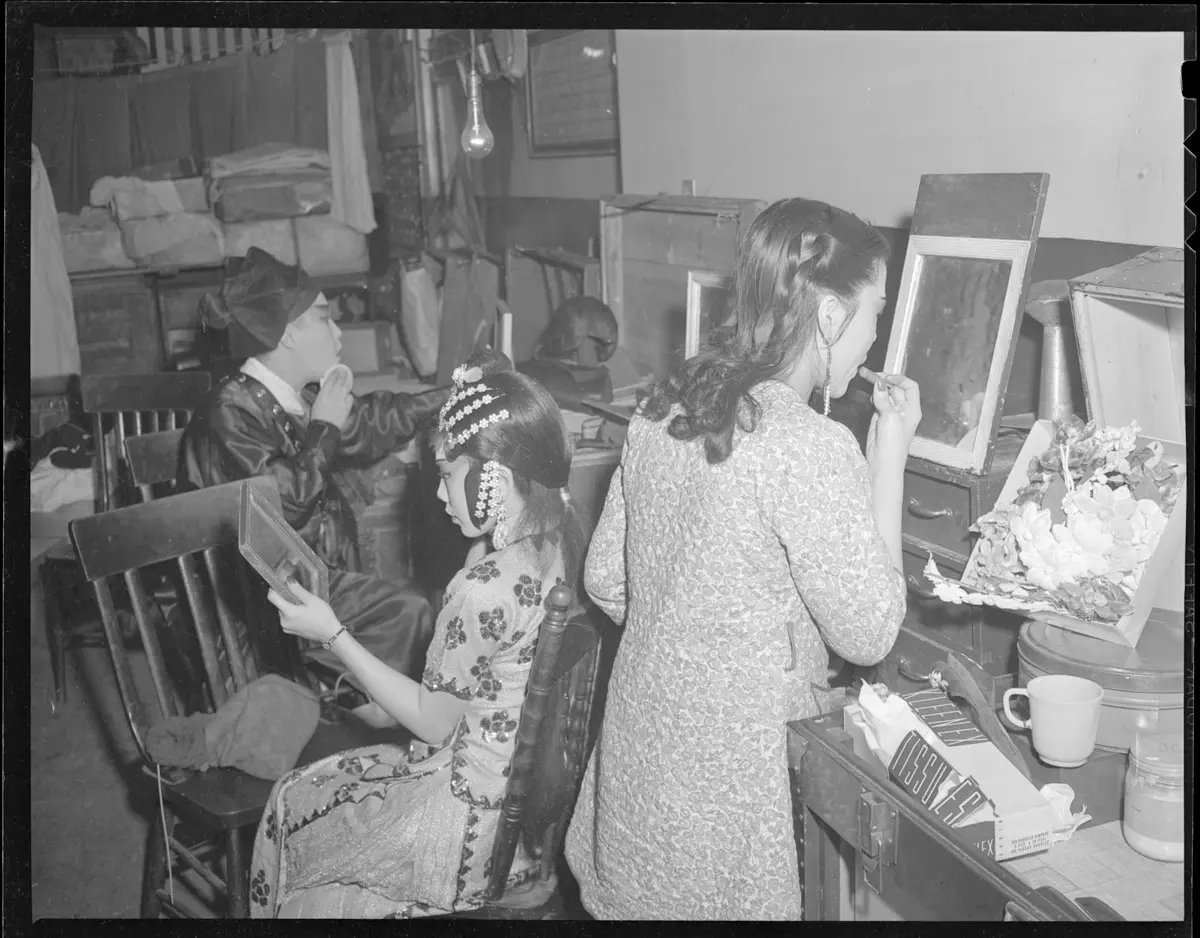
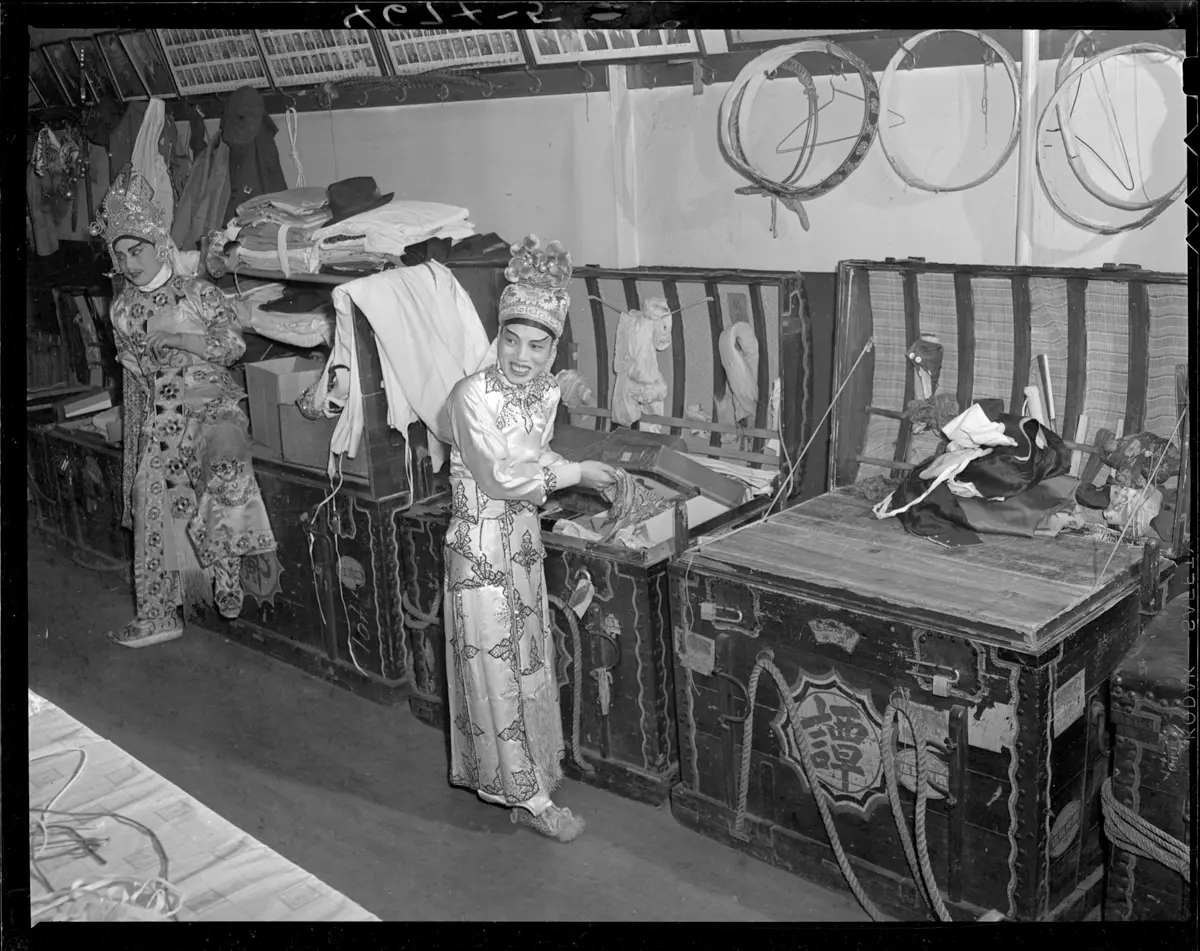
Eaton Auditorium
Actors benefitted from the 1000-seat auditorium that opened in 1930 in the T. Eaton Company’s flagship department store on College Street in Toronto. In addition, Canadian radio drama offered actors a lucrative way to make a living while continuing to perform on stage, and provided a forum for Canadian playwrights to feature their work.
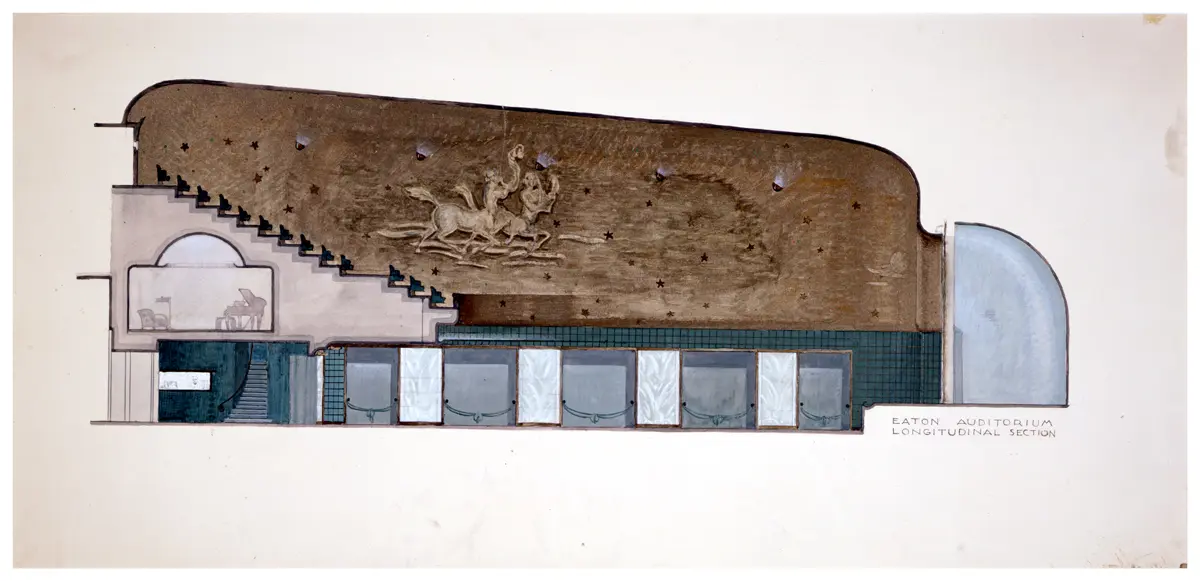
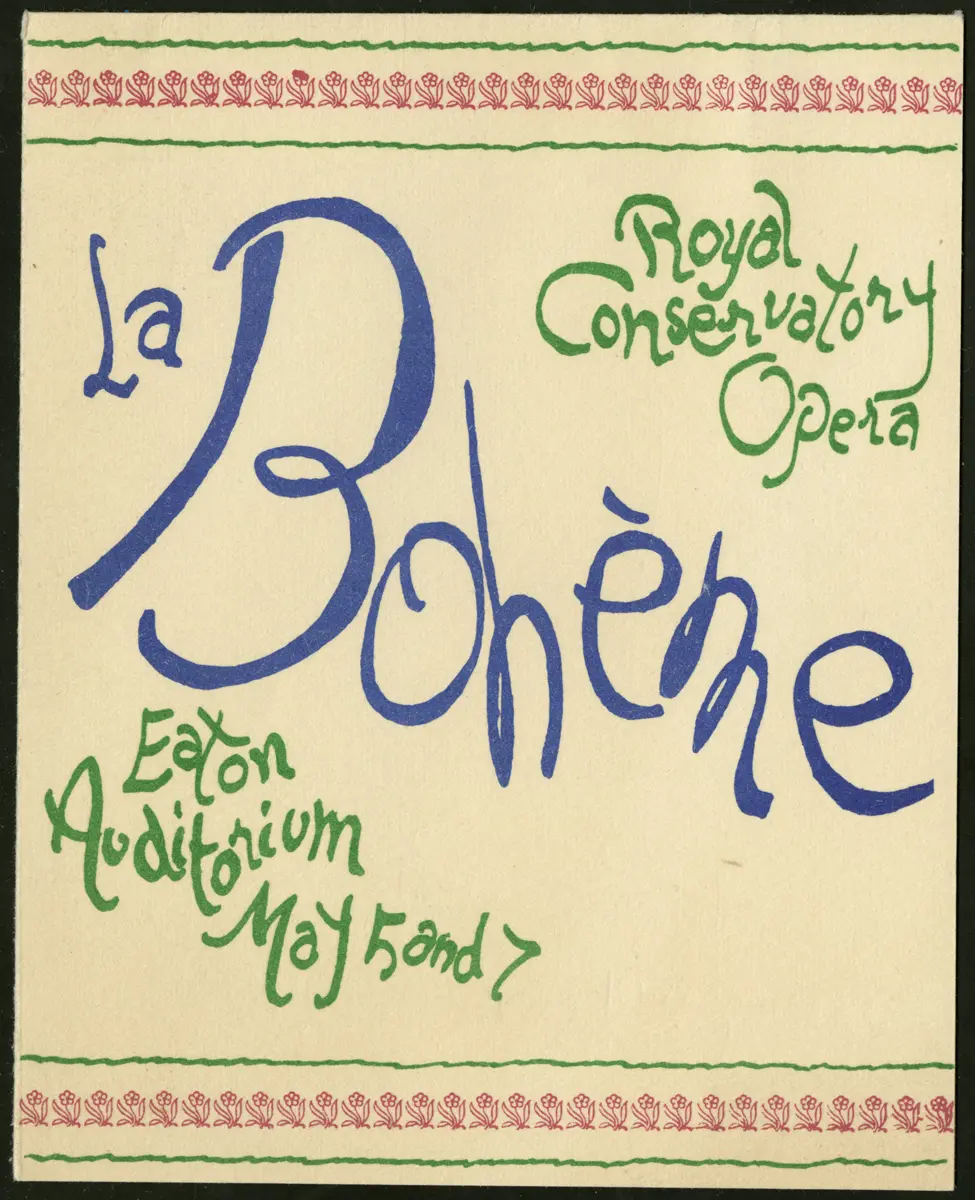
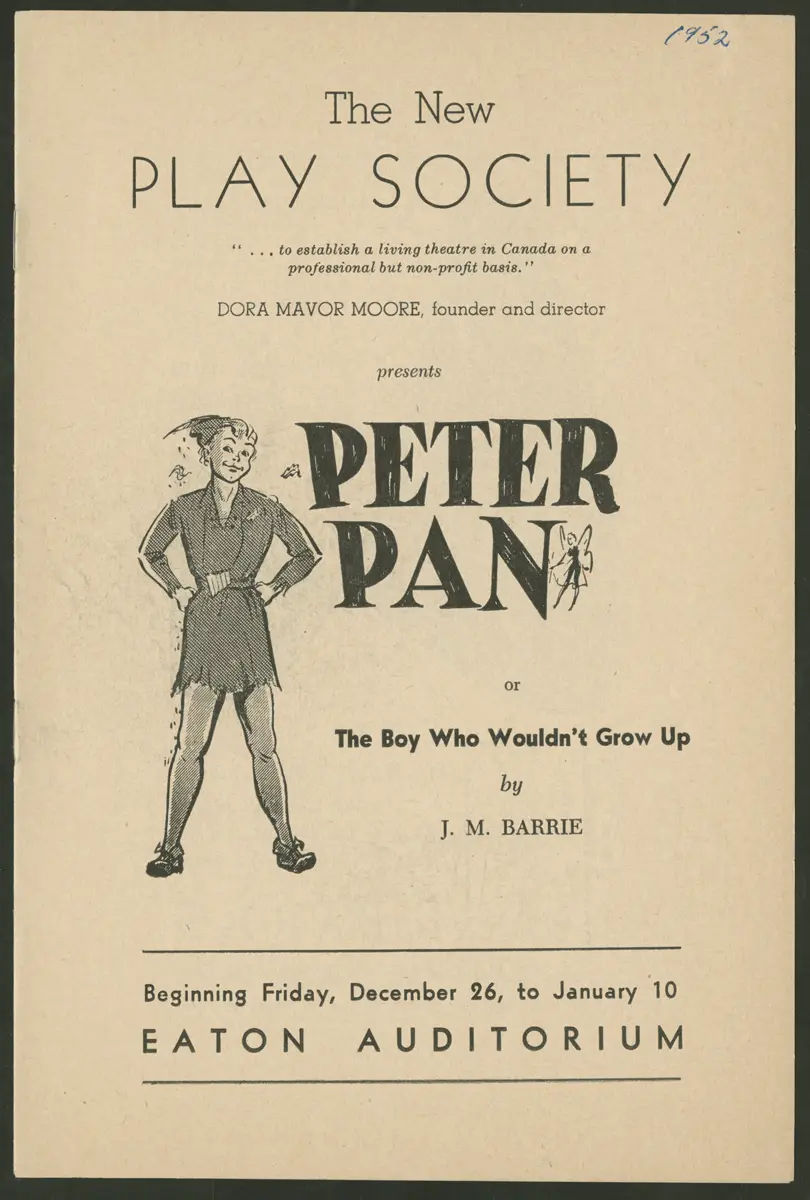
Theatre regulation on the rise
As live theatre developed in the twentieth century, so too did the Government of Ontario’s efforts to regulate performance venues. Theatre inspections formally began in 1913, when the Theatres and Cinematographs Act of 1911 was amended to provide for the appointment of an Inspector whose job was to ensure safety and adherence to the act.
By the 1940s, inspections had become increasingly rigorous, requiring theatre owners to submit photographs of the interior and exterior of their venues as visual proof of compliance with safety standards. These photos are also invaluable as records of theatre design, showcasing innovative venues equipped to accommodate live performances and motion pictures. All the venues featured below continue their legacy as performing arts spaces.
Theatre goes pro: The New Play Society
As one of the first organizations to produce Canadian plays, the New Play Society—the Toronto organization founded by Dora Mavor Moore in 1946—was instrumental in cultivating professional theatre in Canada. With a lack of suitable performance venues after the Second World War, the Society, like many acting groups at this time, staged its first productions in the small theatre in the basement of the Royal Ontario Museum.

Summer stock
Ontario’s major cities weren’t the only locations to witness the development of professional theatre in the mid-1900s. Capitalizing on the appetite for light farce and comedy in Muskoka and other summer tourist destinations, the success of groups like the Actors’ Colony Theatre expanded Ontarians’ appetite for live theatre and contributed to the growth of cultural tourism.
Starting in 1936, the Actors’ Colony Theatre gave performances on Monday evenings in the rotunda ballroom of Bigwin Inn—a resort for the wealthy in Lake of Bays, Muskoka.
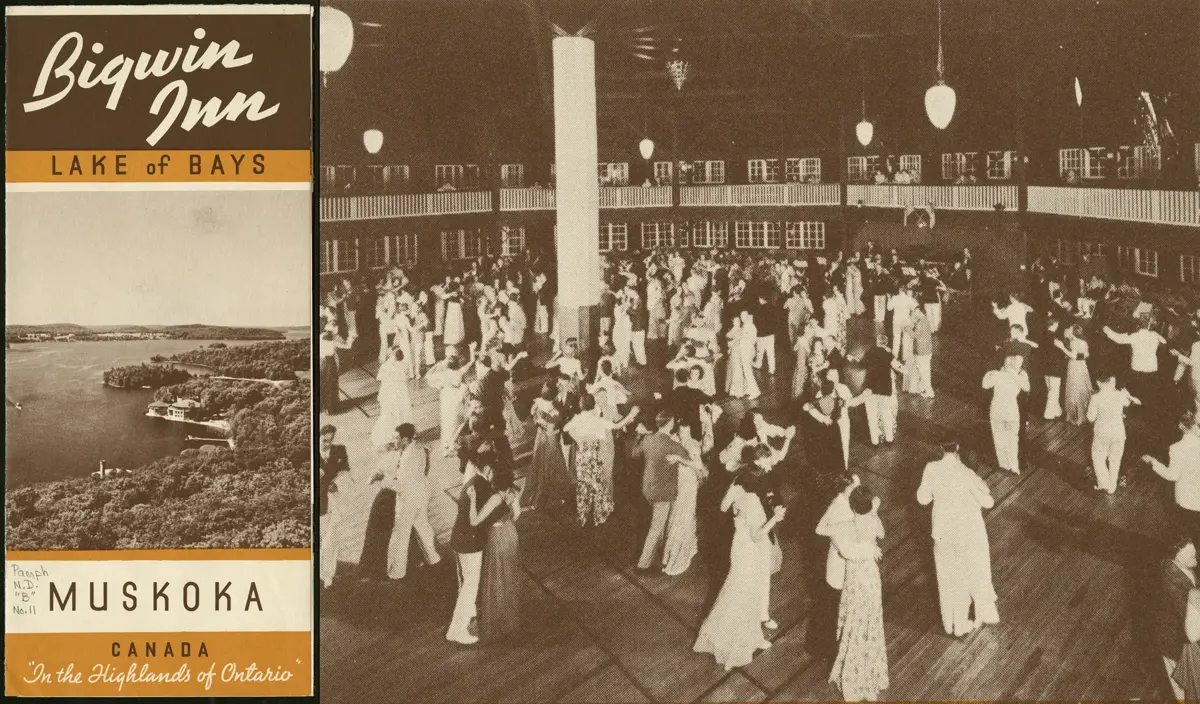
The Massey Report
The Report of the Royal Commission on National Development in the Arts, Letters and Sciences in 1951 (the Massey Report) fuelled the expansion of professional theatre in Ontario. Chaired by the Hon. Vincent Massey, the Commission’s recommendations led to the formation of the Canada Council for the Arts in 1957—a Crown corporation that continues to offer government support for professional artists and arts organizations.
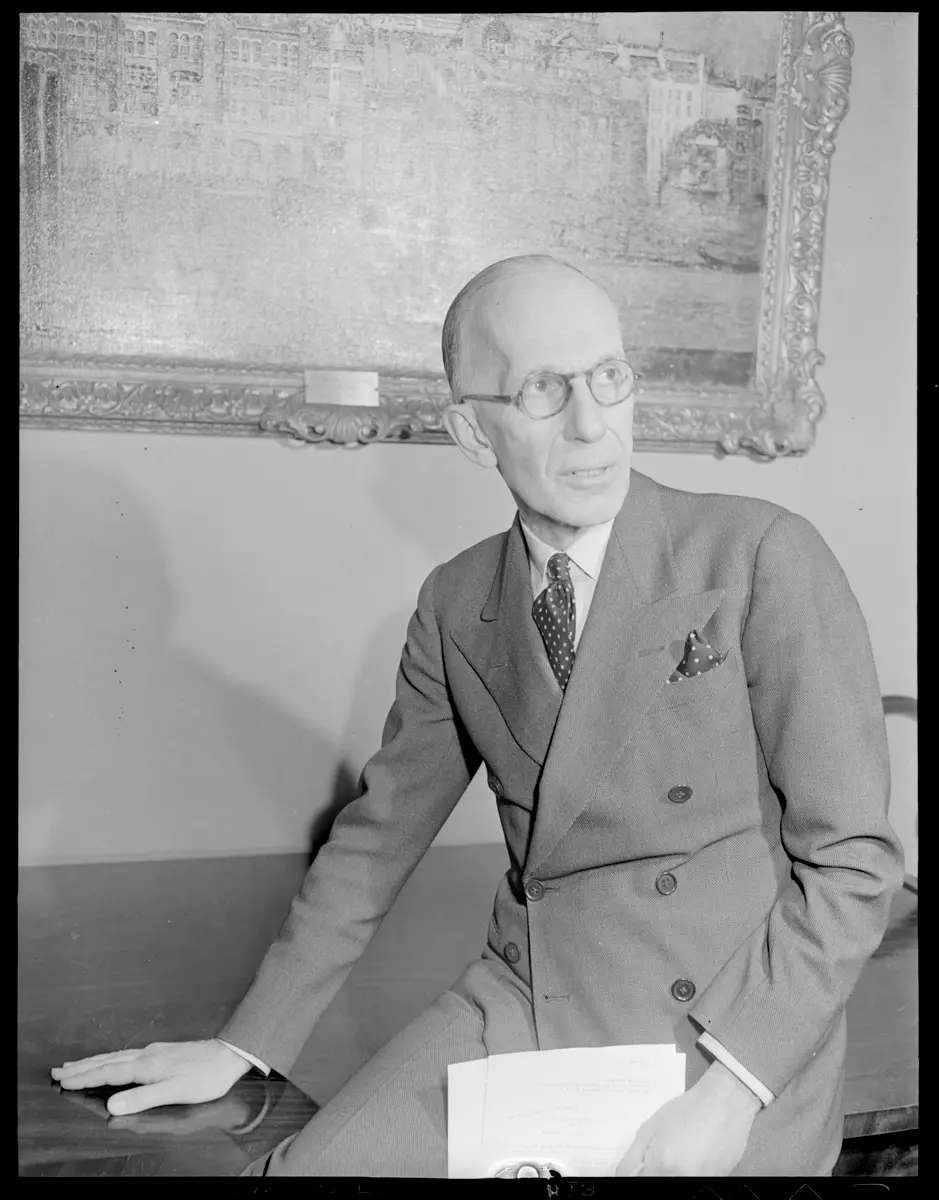
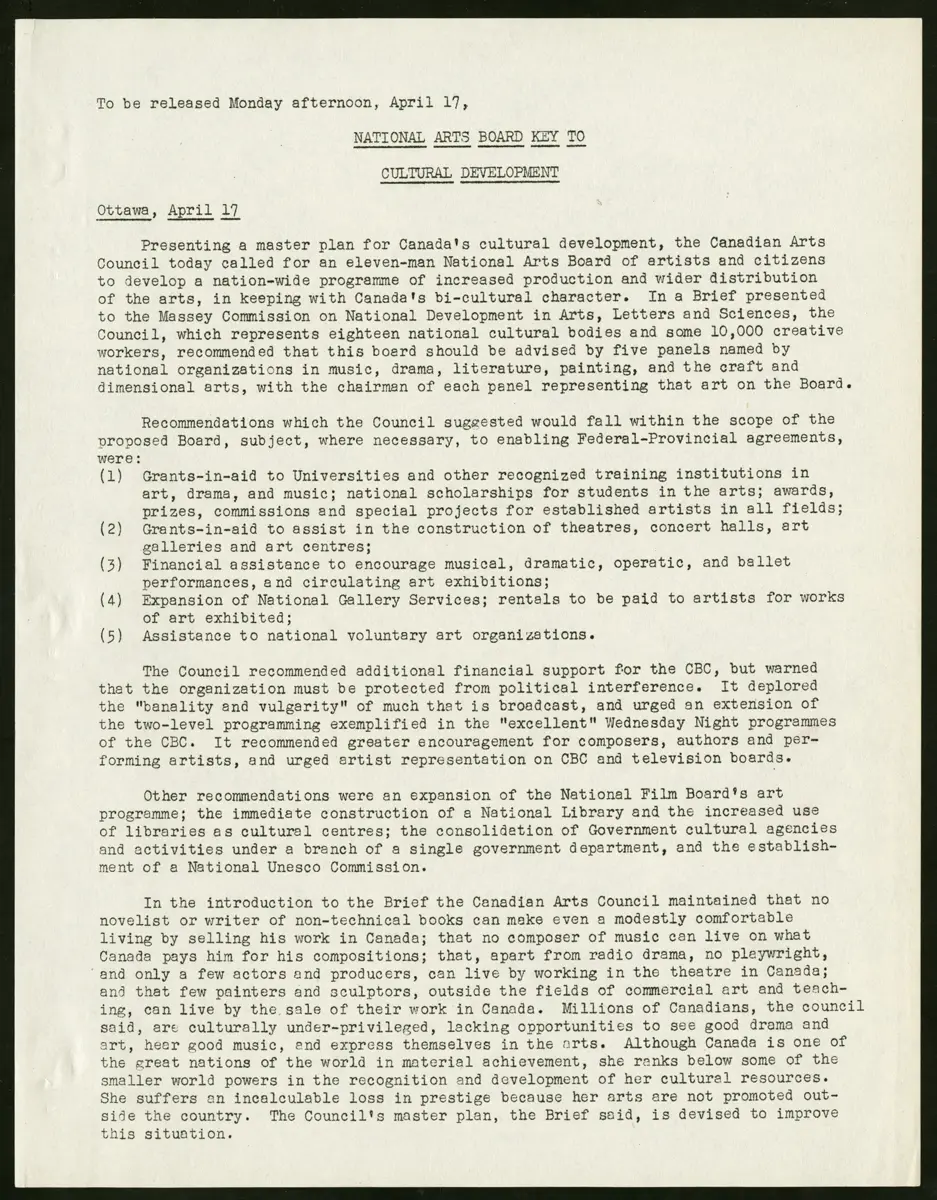
Stratford in the spotlight
The Stratford Festival was also instrumental in the development of professional theatre in Ontario in the postwar years. Initially called the Stratford Shakespearean Festival, it started in 1953 as a venture to improve Stratford’s economy.
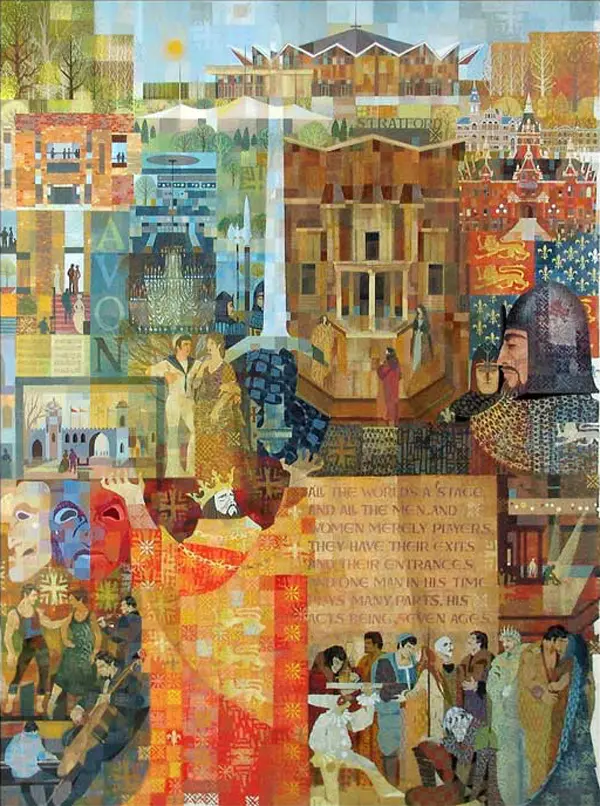
One reason for the Stratford Festival’s success? Tanya Moiseiwitsch’s innovative thrust stage (shown below), which ensured that no spectator in the 1,800-seat venue would be more than 20 metres from the stage. The Stratford Festival laid the foundation for other renowned Ontario theatre festivals, such as the Shaw Festival and Blyth Festival. Stratford remains one of the most prominent arts festivals in Canada, recognized internationally for its productions of Shakespearean plays and contemporary theatre.
Shaw and Stratford Festivals on film
By featuring the Shaw and Stratford Festivals, the Government of Ontario tourism promotion film Ontario à la carte demonstrates the importance of these festivals in attracting visitors to the province.
Ontario à la carte
Back to: Chapter 02
Act II: Vaudeville takes centre stage in the early 1900s
Next up: Chapter 04
Act IV: A behind-the-scenes look at Ontario theatre from the late 1950s to today
Looking for more records?
Search our collection
